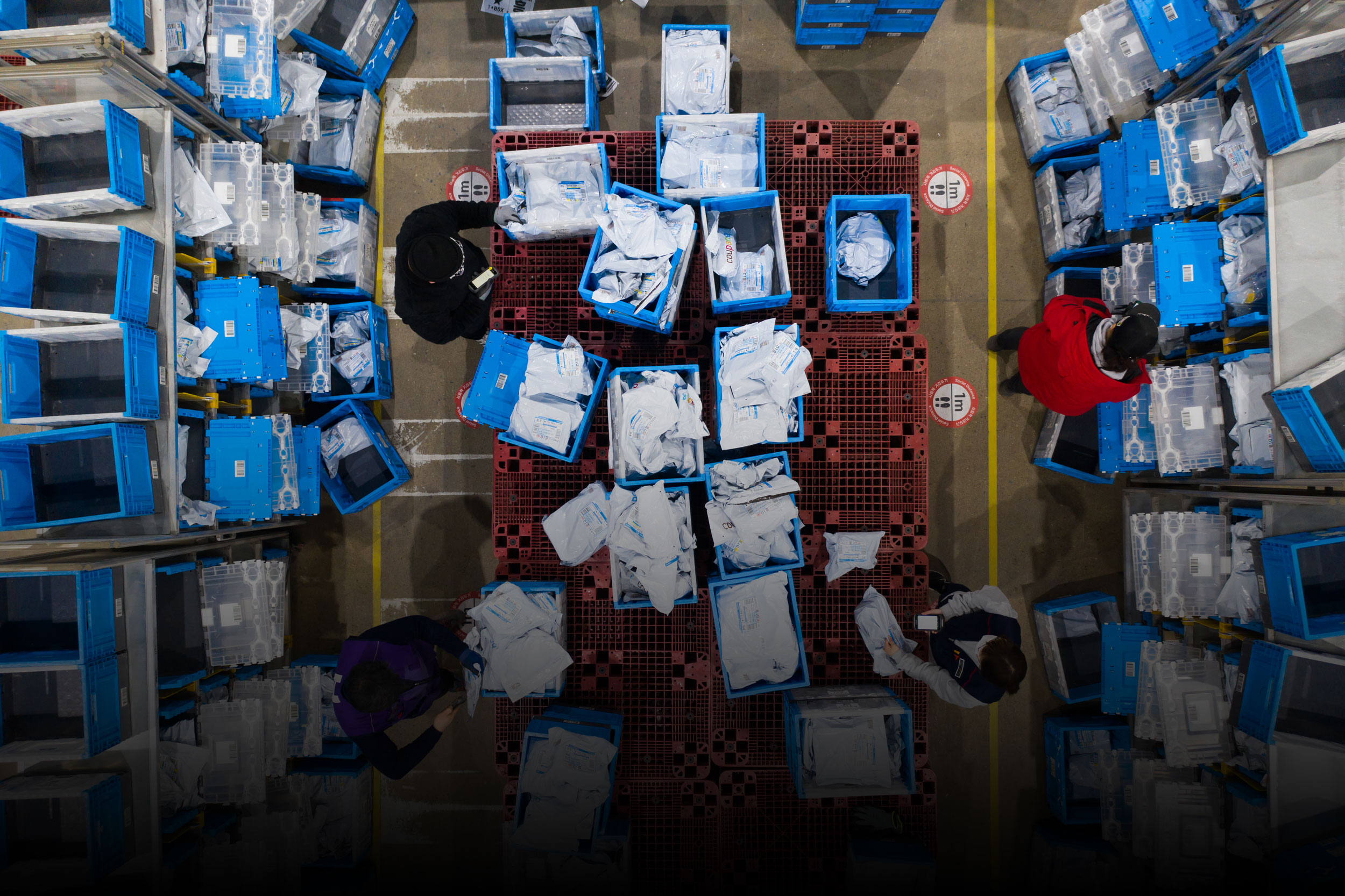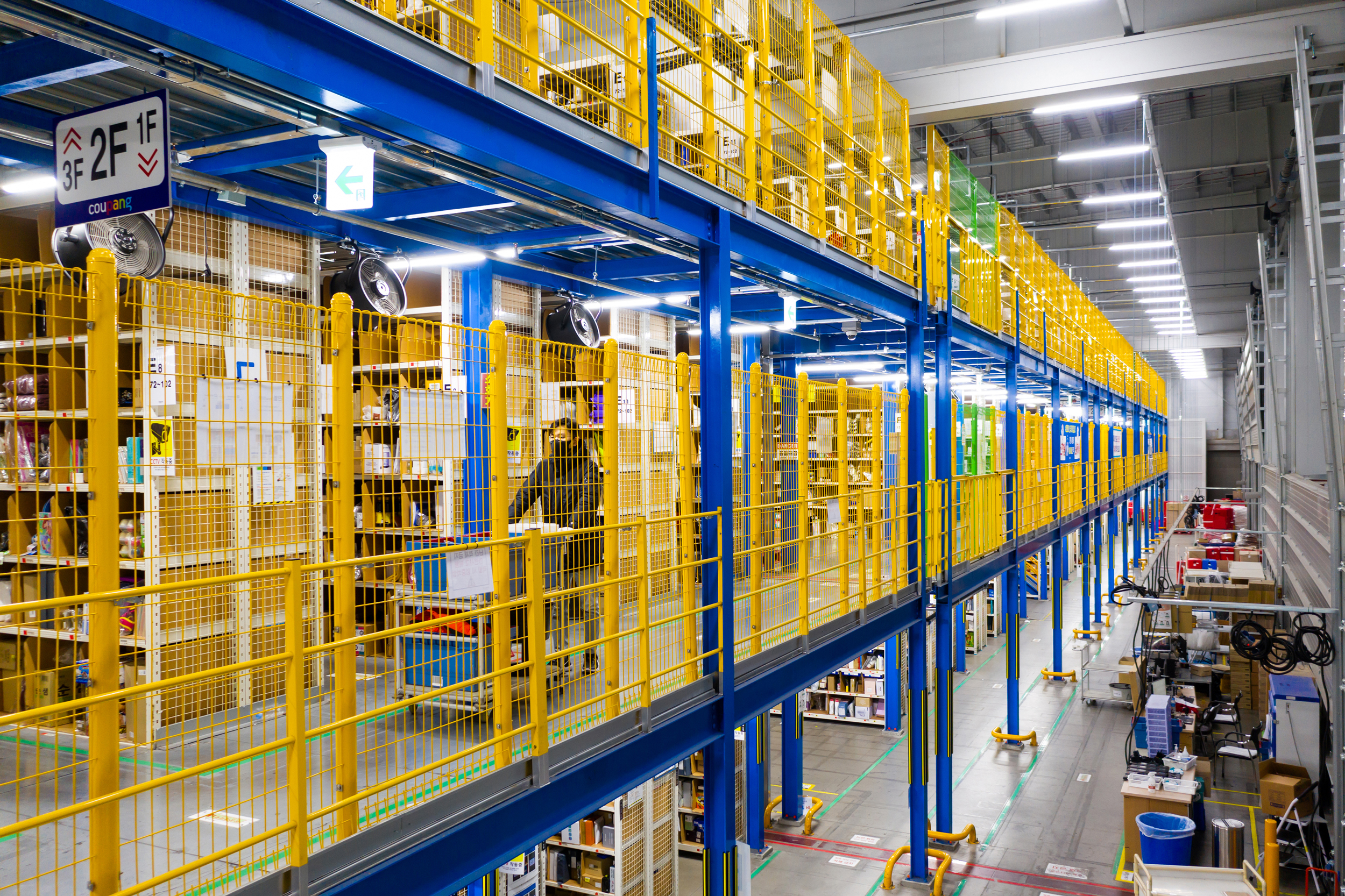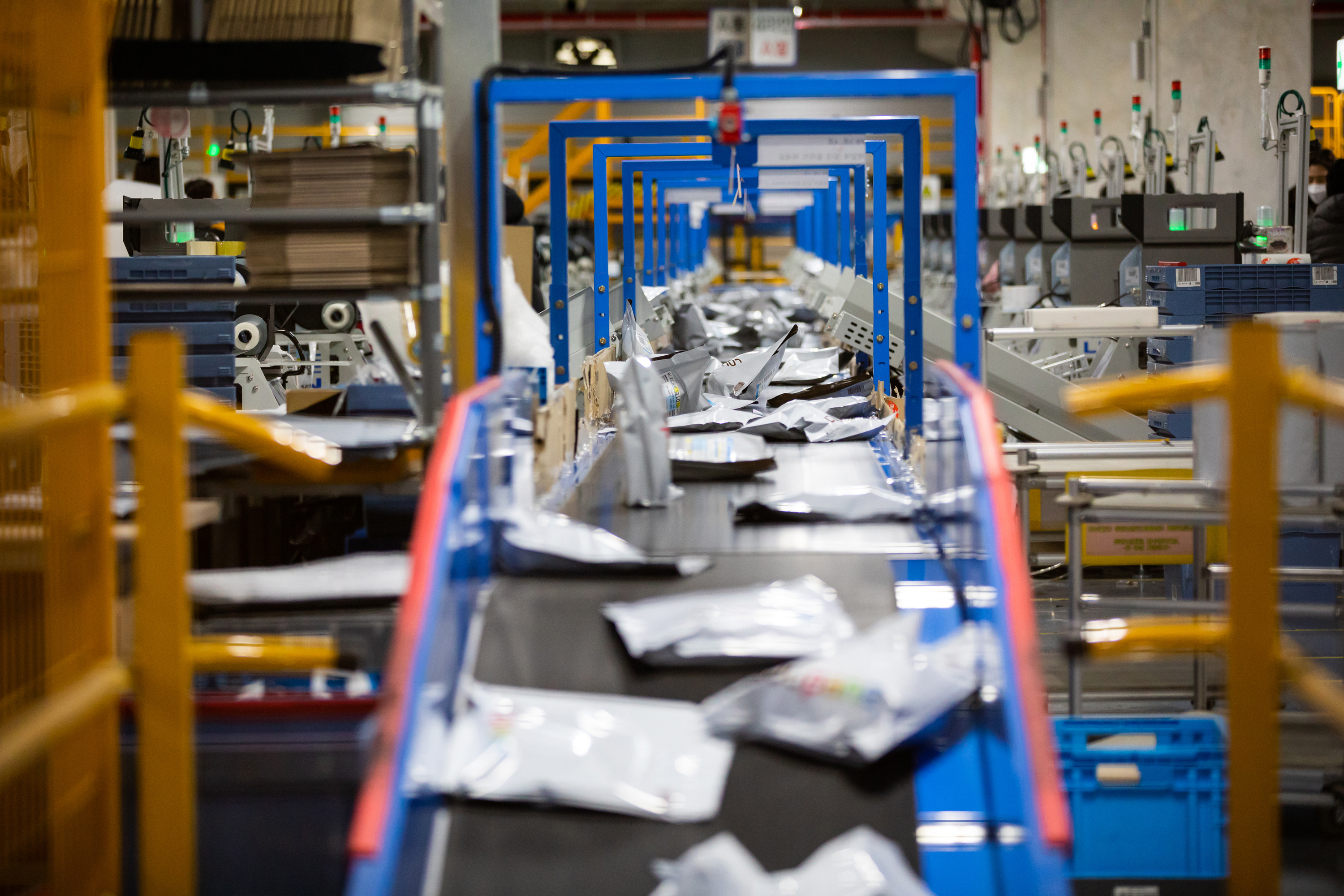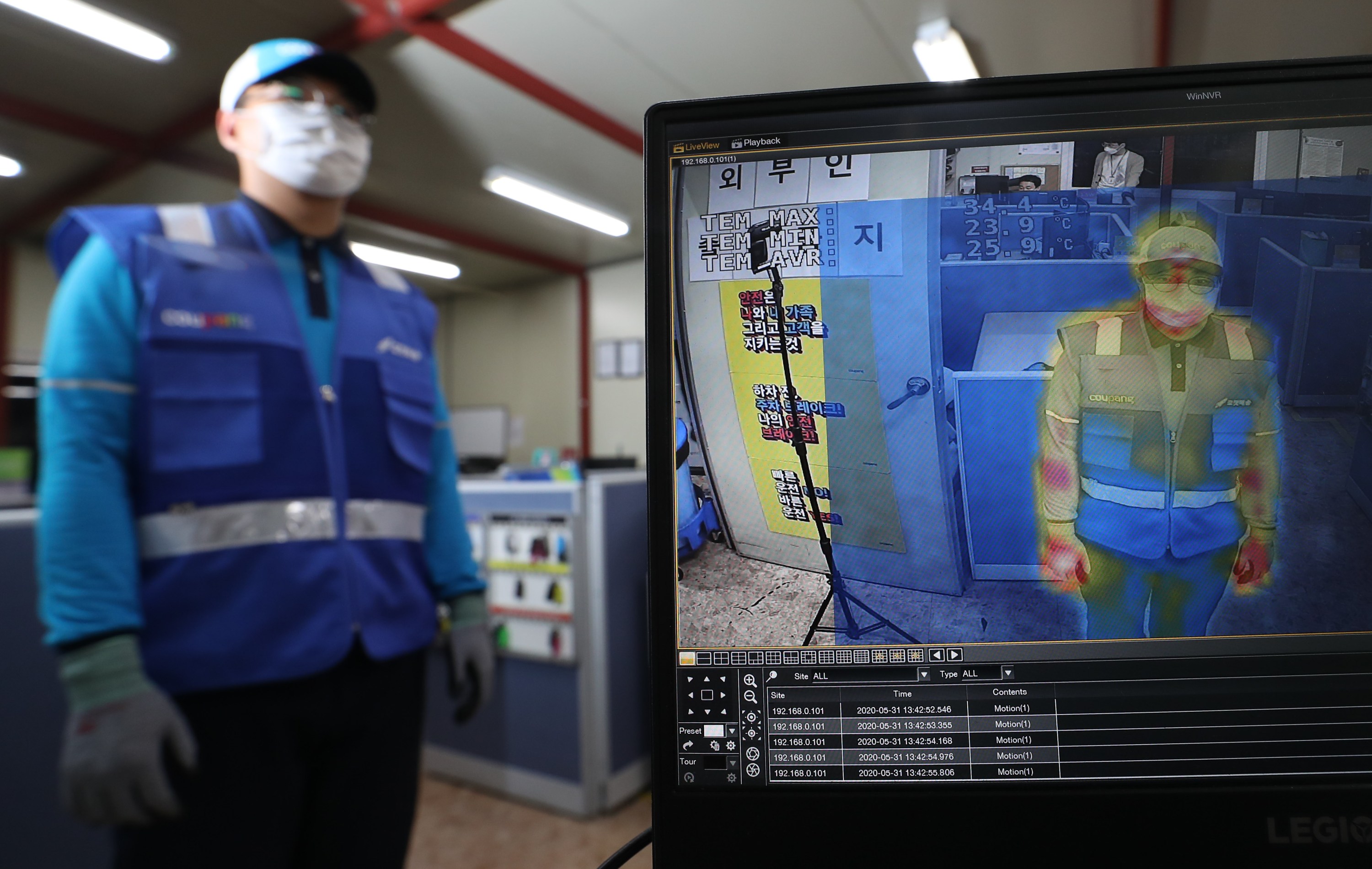This company delivers packages faster than Amazon, but workers pay the price
South Korean e-commerce giant Coupang uses AI to promise almost-instant delivery. But speed comes with troubling labor issues—including worker deaths.

Early on the morning of October 12, 2020, 27-year-old Jang Deok-joon came home after working his overnight shift at South Korean e-commerce giant Coupang and jumped into the shower. He had worked at the company’s warehouse in the southern city of Daegu for a little over a year, hauling crates full of items ready to be shipped to delivery hubs. When he didn’t come out of the bathroom for over an hour and a half, his father opened the door to find him unconscious and curled in a ball in the bathtub, his arms tucked tightly into his chest. He was rushed to the hospital, but with no pulse and failing to breathe on his own, doctors pronounced him dead at 9:09 a.m. The coroner ruled that he had died from a heart attack.
Jang’s story caught my eye because he was the third Coupang worker to die that year, adding to growing concern about the nature of the company’s success. And Coupang has been astoundingly successful: it has risen to become South Korea’s third-largest employer in just a few years, harnessing a vast network of warehouses, 37,000 workers, a fleet of drivers, and a suite of AI-driven tools to take a commanding position in South Korea's crowded ecommerce market. Coupang is everywhere in South Korea: half of residents have downloaded its app, and its “Rocket Delivery” service—the company claims 99.3% of orders are delivered within 24 hours—has earned it a reputation for “out-Amazoning even Amazon.”
Coupang’s use of AI to shorten delivery times is especially striking: its proprietary algorithms calculate everything from the most efficient way to stack packages in delivery trucks, to the precise route and order of deliveries for drivers. In warehouses, AI anticipates purchases and calculates shipping deadlines for outbound packages. This allows Coupang to promise delivery in less than a day for millions of items, from a 60-cent facemask to a $9,000 camera. Such innovations are why Coupang confidently bills itself as the “future of ecommerce,” and were the driving force behind company’s recent launch on Nasdaq that valued the company at $84 billion—the biggest US IPO by an Asian company since Alibaba in 2014.
But what does all this innovation and efficiency mean for the company’s workers?

That was the question I had in mind last summer, before Jang’s death, when I met several of Coupang’s warehouse and delivery workers. Like Jang, who had told his mother that workers were treated like “disposable objects,” they had all experienced the dehumanizing effects of Coupang’s algorithmic innovations. Some talked about a bruising pace of work hitched to the expectations of superhuman delivery times. Others said it was difficult to even go to the bathroom at work. In 2014, when Coupang began offering Rocket Delivery, its on-demand delivery service, it had promised stable careers with above-average benefits even to bottom-rung workers. But somewhere along the way, it seemed, the workers had been reduced to what South Korean labor journalist Kim Ha-young has called the “arms and legs of artificial intelligence.”
It is no coincidence that much of this criticism mirrored reports of working conditions at Amazon. Although Coupang was founded in 2010 as a Groupon-like deals platform, it switched to Amazon’s vertically integrated fulfillment model in 2014, pledging to become the “Amazon of Korea.” In doing so, it ran into the exact same problems with labor.
Demanding work, on demand
What makes Rocket Delivery work is certainty—a promise that Coupang’s algorithms will determine exactly when a batch of deliveries needs to leave the warehouse in order to make it to you on time. In the company’s warehouses, these delivery deadlines come approximately every two hours.
“I realized when I started working there that the sole priority was meeting Rocket Delivery deadlines,” said Go Geon, one former warehouse worker I spoke to. “We were just robots.” Go went on medical leave from his job at Coupang in May 2020 after tearing his left hamstring while running to meet a deadline. He has since been let go by the company.
During the pandemic, the casualties of the obsession with hyperefficiency stacked up. From 2019 to 2020, work-related injuries and illnesses at Coupang and its warehouses nearly doubled to 982 incidents.
Like Amazon, Coupang has used a “unit-per-hour,” or UPH, metric to measure worker productivity in real time and maintain the grueling pace in its warehouses. Although workers are officially given one hour of rest for every eight-hour shift—the legally mandated minimum break—one driver I met last September told me that most people simply worked through their breaks to stay on schedule. He is no longer with the company. In an emailed statement to MIT Technology Review, a Coupang spokesperson stated that the company no longer tracks UPH at its warehouses. But one current worker I spoke to recently told me that some warehouse managers are still openly monitoring work rate this way. “They rarely use the term ‘UPH’ anymore,” he said. “But they’ll still hector you for being too slow, presumably based on some form of concrete proof.”
During the pandemic, from which Coupang has handsomely profited, the casualties of this obsession with hyperefficiency stacked up. From 2019 to 2020, work-related injuries and illnesses at Coupang and its warehouses nearly doubled to 982 incidents. Since Jang Deok-joon’s fatal heart attack, three more Coupang workers have died from what labor activists say was overwork (there have been no official rulings on their deaths).
But despite the concerns these deaths have raised, none of them have caused so much as a blip in Coupang’s operations. On the contrary, the company seems to thrive on how disposable its labor is. Although it employs its workers directly rather than using subcontractors, the majority are reportedly hired on a day-to-day basis the night before via an app called “Coupunch,” or on temporary contracts that usually last a few months. This flexibility allows Coupang to match its labor costs to the ebb and flow of business and keep things lean.

But the constant threat of being denied employment hangs over workers. For those who voice dissent, report a workplace injury, or fall short of their productivity requirements, Coupang is known to withhold contract extensions, workers told me.
In its statement to MIT Technology Review, Coupang said that the company “complies with the Labor Standard Act in every aspect including hiring and termination,” and that “the rate of renewal for the contract worker is more than 90 percent.” However, courts have ruled in the past that the company unfairly fired a worker who submitted a workplace injury claim.
“They make it very clear as soon as you’re hired that if you cause any kind of problems, you won’t be getting a contract extension,” Jeon Woo-oak, a former warehouse worker, told me.
Jang’s death exemplified how exploitative this arrangement can be. As a day laborer who applied for shifts every night via Coupunch, he had been anxious about his precarious employment status. But he had hoped to stay in the company’s good graces and apply for permanent employment, his mother, Park Mi-sook, told me. In the months leading up to his death, he had worked the 7 p.m. to 4 a.m. shift, in addition to frequent overtime, for up to 59 hours over seven consecutive days, earning minimum wage (the equivalent of about $7.60 per hour). “He would be completely wiped out after the end of each deadline,” Park said.
In 2019, as Coupang ramped up its overnight delivery service that offered a 7 a.m. delivery guarantee for orders made the previous evening, the number of deadlines during a typical night shift in the Daegu warehouse increased from around three to seven, according to one worker. Meeting them took a physical toll: Athletic and sturdily built, Jang had lost around 30 pounds since starting at Coupang in June 2019, Park said. She added that the rapid weight loss caused him to develop wrinkles on his face.
In February, the government of South Korea officially attributed Jang’s death to overwork. The final report into his death noted that Jang’s body bore the signs of severe muscular breakdown. Coupang issued an apology and promised to improve working conditions, such as expanding employee medical checkups.
In its emailed statement, a Coupang spokesperson pointed to the fact that Jang’s death was the only one to be officially ruled work-related in the company’s history. And it said its recent investments into warehouse automation “increases efficiency and decreases workload for our workers.”
Worldwide worries
All of this should sound familiar to those who follow Amazon, where the company’s drivers and fulfillment center workers have reported almost the exact same problems that are just now emerging at Coupang. Amazon too has faced criticism for a punishing pace of work that leads to high rates of injury, the use of algorithms to surveil and fire workers, oppressive productivity requirements that treat workers like robots, and a business model that seems to depend on disposable labor.
In the United States, discontent around these conditions fueled a historic unionization drive at Amazon’s fulfillment center in Bessemer, Alabama earlier this year. Union organizer Stuart Appelbaum, the president of the Retail, Wholesale and Department Store Union (RWDSU), talked about the “unbearable” pace in the company’s warehouses and explained: “This is really about the future of work. People are managed by an algorithm. They’re disciplined by an app on their phone. And they’re fired by text message. People have had enough.” In response, Amazon, which has a long history of union-busting activities including surveilling and intimidating workers, launched a large-scale anti-union blitz while denying allegations that its delivery drivers were forced to urinate in bottles. Amazon has since walked back its denial of these reports, but ultimately won the Bessemer vote.
In a letter to Amazon shareholders published shortly after the unionization vote in early April, Jeff Bezos announced that the company would be rolling out a new “job rotation program” to address the issue of high injury rates. The program, wrote Bezos, will use “sophisticated algorithms to rotate employees among jobs that use different muscle-tendon groups to decrease repetitive motion and help protect employees from MSD risks.” But underlying this scheme is a problematic view of injuries as a mere efficiency problem rather than the warning signs of deeper dysfunction. And at bottom, the plan seems like less of a serious solution for overwork than an extension of the totalizing and performance-obsessed micromanagement that created the problem in the first place.
In an emailed statement to MIT Technology Review, Amazon spokesperson Max Gleber declined to offer additional details on the program. “Our scanning process is to track inventory movement, not people,” he said. “We know these are physical jobs but we do all that we can to ensure the safety and health of our employees.”

The unionization drive may have failed, but it highlighted how current worker protections are unable to contend with the future of work that Appelbaum spoke about. And the same is true in South Korea, where Coupang has managed to navigate the blind spots in South Korean labor law to keep its workers on insecure contracts—and therefore less likely to organize—while subjecting them to ever-intensifying workloads.
When I first began reporting on Coupang last summer, initially as an investigation into the company’s mishandling of a covid-19 outbreak at one of its warehouses, I was struck not only by how similar its labor issues were to Amazon’s, but by how Coupang workers had immediately understood that their fight was against not just a misbehaving local employer, but the very idea of superfast delivery itself.
Coupang has often repeated the same line when faced with criticisms of its labor practices: that the company’s direct employment model allows it to offer better benefits compared to the rest of the industry. But paying a little more for dehumanizing work does not suddenly make it any less dehumanizing, and workers I spoke to said that any such solutions would fall short of meaningful progress. “The source of all these problems are delivery deadlines and Rocket Delivery,” Go Geon, the former warehouse worker, told me. “That is the starting point of everything.” That’s why the Coupang drivers’ union isn’t simply campaigning for incremental improvements to working conditions or wages, but has called for a rollback of the company’s razor-thin delivery guarantees.
After he left Coupang, Go founded an advocacy group for the company’s warehouse workers. He told me he’d felt a sense of kinship toward Amazon workers after realizing they were suffering in the same way. “It would be nice to launch some collective action,” he told me. It was just an offhand remark, but it felt like a vital insight: challenging a single, universalized model that is reshaping e-commerce around the world might require some kind of international solidarity among workers.
An existential dilemma
Despite Coupang’s promises to address its own labor issues, the larger economic currents in which it is placed only deepened during the pandemic. Global e-commerce exploded thanks to store closures and social distancing, and the industry is projected to record close to $5 trillion in sales worldwide by the end of 2021.
In its IPO prospectus, Coupang acknowledged its core existential dilemma: pursuing “speed and reliability”—the two pillars of its business model—while controlling its labor costs, which have grown fourteen-fold between 2014 and 2020. (Meanwhile, the company has yet to turn a profit with Rocket Delivery.)
What would a more labor rights-minded approach to this balancing act entail? Can fast delivery co-exist with worker welfare? I recently posed these questions to Jang Kwi-yeon, a labor researcher at the Labor Rights Research Institute. When I spoke to her last year, she had compared Coupang’s warehouses to the infamous sweatshops in 1970s South Korea.
“I think the logistics system itself should be overhauled,” she told me. “The right to rest and the health of workers should be set as fixed preconditions, and then the algorithms should then be put to work to calculate how fast deliveries can be made.”
The chances of an e-commerce company whose entire business hinges on being fast willingly choosing to be slower are of course close to nil. And even if Coupang changed its approach, the promise of near-instant delivery has already replicated the same problem everywhere. To keep up with Coupang, competitors like internet giant Naver and department store chain Shinsegae Group are promising ever-faster deliveries that will undoubtedly place an even greater burden on their workers. More than a dozen delivery drivers for other operators have died on the job in the past year. Families and union officials have attributed many of these deaths to overwork, similar to Jang Deok-joon’s case.
"The right to rest and the health of workers should be set as fixed preconditions, and then the algorithms should then be put to work to calculate how fast deliveries can be made."
Jang Kwi-yeon, Labor Rights Research Institute
In the US, more competition for Amazon—Walmart, for example, has started offering same-day delivery—suggests that the same story will play out. These companies have changed expectations and hidden the real costs from consumers, while many workers who are faced with rising unemployment caused by the pandemic can’t afford to seek out a more humane workplace.
Some version of ethical super-fast delivery may exist, attained perhaps with better wages, stricter health protocols, and by hiring a lot more workers. But Coupang’s story—and the stories of its workers—suggests that this may be a fundamentally flawed proposition. In the end, it is hard to see how faster delivery guarantees cannot be paid for without the increasingly punishing and dehumanizing labor of frontline workers. As the former driver told me: “it’s a model in which it’s impossible not to aggressively slash down labor costs.”
Max Kim is a freelance journalist, writer, and producer based in Seoul, South Korea.
Deep Dive
Policy
Is there anything more fascinating than a hidden world?
Some hidden worlds--whether in space, deep in the ocean, or in the form of waves or microbes--remain stubbornly unseen. Here's how technology is being used to reveal them.
A brief, weird history of brainwashing
L. Ron Hubbard, Operation Midnight Climax, and stochastic terrorism—the race for mind control changed America forever.
What Luddites can teach us about resisting an automated future
Opposing technology isn’t antithetical to progress.
Africa’s push to regulate AI starts now
AI is expanding across the continent and new policies are taking shape. But poor digital infrastructure and regulatory bottlenecks could slow adoption.
Stay connected
Get the latest updates from
MIT Technology Review
Discover special offers, top stories, upcoming events, and more.